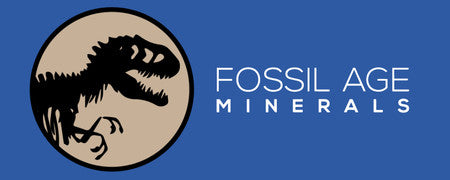Who said you needed fancy tools or far-flung sites to go fossil hunting? Some of the most fascinating fossils are just waiting to be spotted in rock formations while you’re outdoors hiking and enjoying nature. For amateur collectors, keeping an eye out for these common rock fossils adds an exciting new dimension to any trail.
In this blog, we discuss some easily identifiable fossils to look for on your next hike that will leave your inner paleontologist thrilled.
Petrified Wood

Petrified wood is created when plant debris gets buried, and minerals slowly replace the organic matter, transforming it into stone over millions of years. The result is literally organic materials turned into rock - or rocks that look like petrified wood. These heavy fossilized logs retain beautiful lifelike detail in the grain patterns and cellular structures of the original wood. Eroded petrified wood fragments are easily spotted along hiking trails, cutting through ancient forests turned to stone.
Fern Fossils

Delicate frond and stem impressions from primitive ferns are common in shale deposits spanning the Permian to Cretaceous periods. Spotting the distinctive leaf venations preserved in rock is a good indicator of fern fossils. Carbon film left by decayed plant matter sometimes outlines their lacy frond patterns, too. Shale rock layers tend to split nicely, revealing these lovely plant fossils in their matrix.
Crinoids

Also known as sea lilies, crinoids were aquatic species related to starfish with flower-like bodies anchored by stems. While the actual animals decayed after death, the stems often got preserved as fossils. Their column-like segmentation arranged in discs is visually striking. Spotting these while hiking through limestone is like finding an ancient stack of coins or poker chips embedded in rock.
Brachiopods

These marine shellfish were abundant from the Cambrian to the Jurassic era. Brachiopods have two uneven valve shells, unlike the identical halves of bivalve clams. Their shells often fossilized nicely in limestone, revealing delicate ribbed ornamentation. Brachiopods range from tiny pea sized fossils to giant hand-sized shells easily spotted when they erode out of limestone rock faces.
Corals

Coral reef structures built from calcium carbonate are natural fossil factories, preserving countless marine species over millions of years. Fossilized corals tend to retain their familiar branch-like skeletons and six-sided symmetry. Their stony interiors sometimes contain echinoderms, bryozoans, clams and other marine creatures in a rich fossil assemblage within the original coral heads.
The above are just a sample of the many common fossils you can chance upon while hiking through the right terrains. Beyond dramatic dinosaur bones, a world of more modest but equally fascinating rock fossils are embedded right in rocks and fossils around us. Keep this starter list handy to start spotting Mother Nature’s marvels hiding in plain sight


